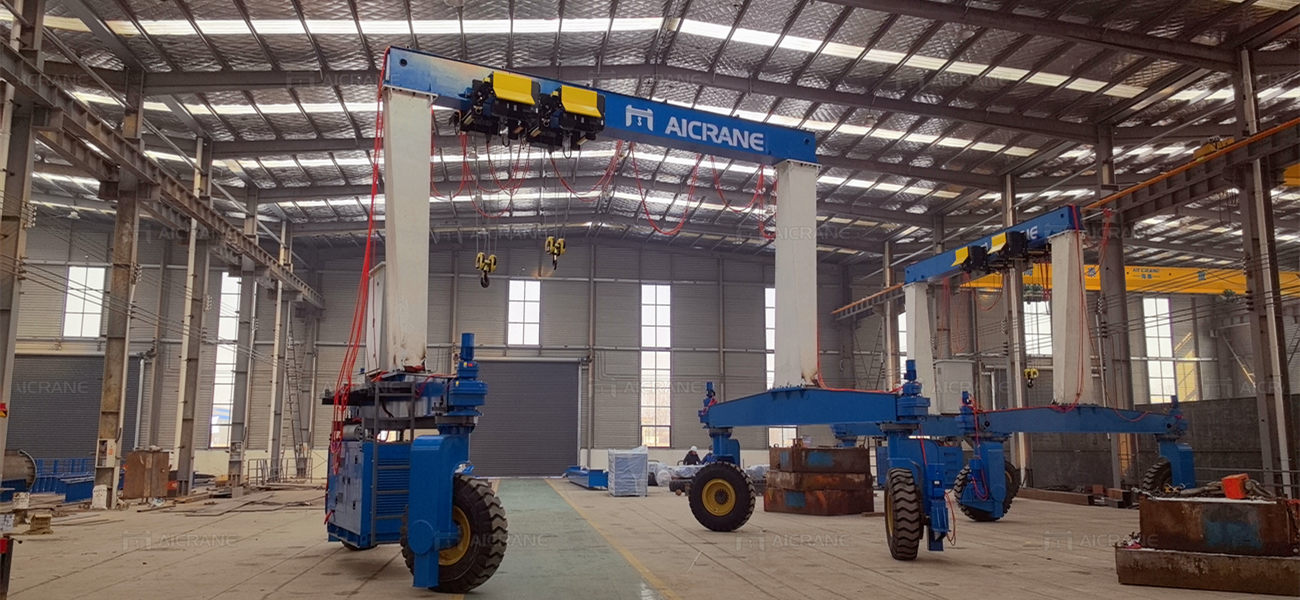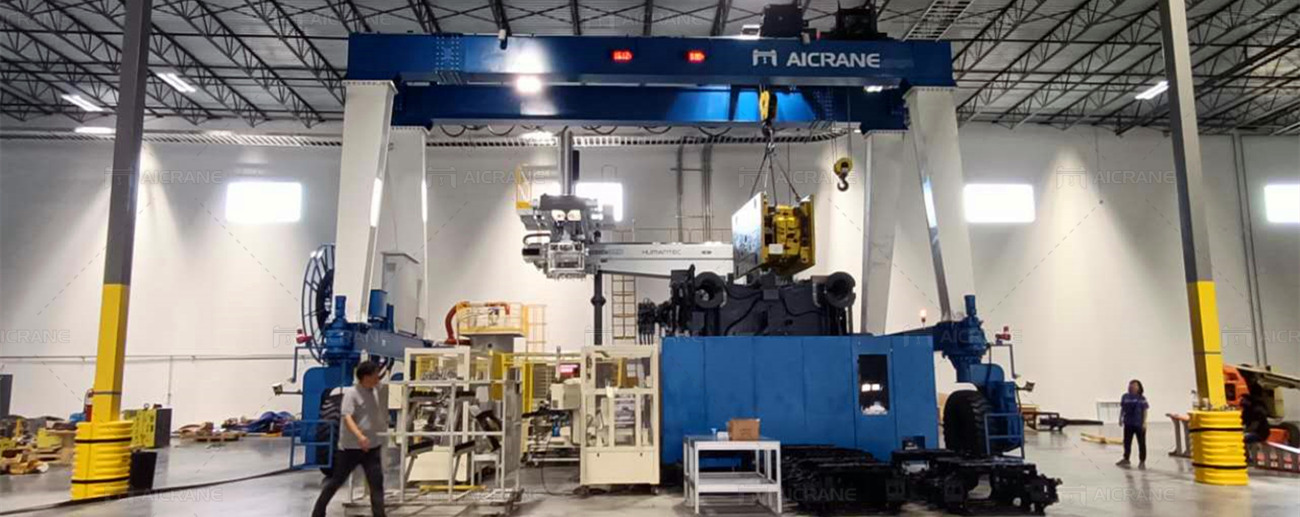The rubber tyred gantry crane (RTG) is a critical piece of equipment for container handling in ports, terminals, and storage yards. Its mobility, enabled by rubber tires, allows it to move seamlessly across large areas, offering flexibility and efficiency in container stacking and retrieval. Proper tire installation is crucial to ensure optimal performance, safety, and durability. This guide outlines the essential steps and best practices for efficiently installing tires on a rubber tyred gantry crane.

Understand the Importance of Tire Installation
The tires on a rubber tyred gantry crane play a significant role in its overall functionality. Poor installation can lead to:
Uneven weight distribution, reducing crane stability.
Increased wear and tear on the tires, shortening their lifespan.
Potential safety risks, such as tipping or tire failure during operations.
Proper installation ensures the RTG operates smoothly, reducing maintenance costs and downtime.
Prepare for Installation
Efficient installation begins with thorough preparation.
Gather Tools and Equipment: Have all necessary tools ready, including hydraulic jacks, torque wrenches, alignment tools, and safety gear.
Inspect the Crane: Ensure the rubber tyred gantry crane is stable and properly positioned. Conduct a pre-inspection to check for existing wear or damage to the wheel assemblies.
Choose the Right Tires: Verify that the tires match the manufacturer’s specifications in terms of size, load capacity, and material composition.
Proper preparation minimizes delays and ensures a smooth installation process.
Follow Safety Protocols
Safety should always be the top priority during tire installation.
Work on Stable Ground: Ensure the crane is parked on a flat, stable surface to prevent shifting during the process.
Use Safety Supports: Employ chocks and supports to stabilize the crane while lifting it.
Wear Protective Gear: Technicians should wear gloves, steel-toed boots, and eye protection.
Disconnect Power: Deactivate the rubber tyred gantry crane’s power systems to prevent accidental movement during installation.
Following these protocols helps protect workers and equipment.
Remove Existing Tires
If the crane already has tires installed, begin by removing them carefully.
Elevate the Crane: Use hydraulic jacks to lift the crane’s wheel assemblies off the ground.
Loosen Fasteners: Use a torque wrench to loosen the bolts or nuts securing the old tires.
Remove Tires Safely: Carefully detach the tires from the wheel hubs, ensuring no damage occurs to the crane’s wheel assemblies.
Inspect Components: Check the wheel hubs, bolts, and other components for wear or damage before installing the new tires.
Removing old tires properly ensures a clean slate for new installations.

Install New Tires
Installing new tires requires precision to ensure stability and functionality.
Align the Tires: Position the new tire properly on the wheel hub, ensuring correct alignment with the bolt holes.
Secure Fasteners: Tighten bolts or nuts in a crisscross pattern to ensure even pressure. Use a torque wrench to apply the manufacturer-recommended torque settings.
Double-Check Alignment: Use alignment tools to confirm the tire is seated evenly on the hub.
Properly installed tires reduce the risk of uneven wear and enhance the crane’s performance.
Test Tire Pressure
After installation, it’s essential to check the tire pressure.
Use a Pressure Gauge: Measure the air pressure in each tire, ensuring it meets the manufacturer’s recommendations like Aicrane.
Adjust as Needed: Inflate or deflate the tires to achieve uniform pressure across all wheels.
Monitor Load Distribution: Ensure that the crane’s weight is evenly distributed across the tires to prevent overloading specific wheels.
Correct tire pressure enhances mobility and reduces the risk of punctures or blowouts.
Perform a Post-Installation Inspection
Once all tires are installed, conduct a thorough inspection.
Check Fasteners: Ensure all bolts or nuts are securely tightened.
Inspect Alignment: Verify that all tires are aligned correctly and evenly.
Test Mobility: Slowly move the crane a short distance to ensure smooth operation and stability.
Addressing any issues during this stage prevents complications during full-scale operations.
Schedule Regular Maintenance
To maximize the lifespan of the newly installed tires and maintain the rubber tyred gantry crane’s efficiency:
Inspect Tires Regularly: Check for signs of wear, punctures, or uneven tread.
Monitor Pressure: Maintain consistent tire pressure to prevent unnecessary stress on the crane.
Rotate Tires: Periodically rotate the tires to promote even wear and extend their service life.
Keep Records: Document tire installations, inspections, and maintenance activities for future reference.
Regular maintenance ensures the crane operates at peak efficiency and minimizes downtime.
Consider Using Professional Services
For complex installations or if the crane operates in challenging environments, consider hiring professional technicians.
Expertise: Professional services ensure the tires are installed correctly and efficiently.
Specialized Tools: Professionals often have access to advanced tools and equipment for precise installations.
Warranty Protection: Using authorized services may help preserve the crane’s warranty.
Investing in professional services can save time and reduce risks.
Leverage Manufacturer Support
The rubber tyred gantry crane manufacturers are valuable resources during tire installation.
Consult Manuals: Follow the manufacturer’s installation guidelines and specifications.
Seek Technical Support: Contact the manufacturer for advice or troubleshooting assistance.
Purchase OEM Tires: Opt for original equipment manufacturer (OEM) tires for guaranteed compatibility and quality.
Manufacturer support ensures the installation meets industry standards.
Efficiently installing tires on a rubber tyred gantry crane is essential for ensuring optimal performance, safety, and longevity. By preparing thoroughly, adhering to safety protocols, and following precise installation procedures, you can maximize the crane’s operational efficiency. Regular maintenance and professional assistance further enhance the effectiveness of the installation process. With these steps, your rubber tyred gantry crane will be well-equipped to handle demanding container operations with reliability and precision.